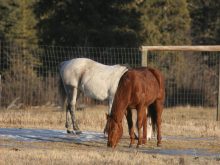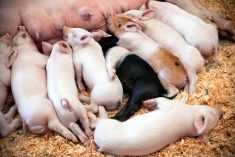KAMLOOPS, B.C. – Cattle seem to prefer drinking out of troughs to drinking from streams.
That discovery by British Columbia researchers could help cattle producers who are under pressure to keep their livestock out of creeks and streams.
A joint research project conducted by Agriculture Canada and the B.C. agriculture and environment ministries monitored cattle’ s behavior when offered a choice of drinking from a trough or creek.
Water was pumped into troughs from the creeks so there was no difference in quality.
Read Also

Why selenium is still an important factor in horse health
Selenium is an essential equine trace mineral that supports antioxidant defense, muscle integrity, immune function, metabolism and thyroid activity.
Cattle preferred the trough 80 percent of the time, no matter what the distance from the creek. However, they still went to the creeks during the summer. Some went for shade and others scratched themselves on trees.
Researchers aren’ t sure why the animals preferred the trough even if the creek was closer. Footing may be better than a creek bed. They may also be able to see predators better.
“They are prey for lots of other animals, so they can see what is going on. We don’ t really know what the reason is,” said Doug Viera, whose research is based at Agriculture Canada’ s range station in Kamloops.
Although stream health is not part of the study, researchers did notice less water pollution and less trampling around creek banks.
“One of the big issues in B.C. is damage to riparian areas by cattle.”
Cattle are also blamed for leaving harmful bacteria and parasites in water when they defecate.
Previous studies have found that cattle performance improves by 20 percent when they drink clean water, so further work is under way to offer better water.
A new study starting this year looks at dugouts in B.C.’ s southern interior, as well as at the Onefour station in southeastern Alberta.
Researchers want to know if cattle will select the trough over the dugout, which could improve water quality in dugouts. Water levels in dugouts can drop during hot summers, increasing salt concentration.
There is evidence that bacteria can break down salt, but researchers don’ t know how to activate the microbes. They plan to investigate this further.
“Sulfate-reducing bacteria are present in some of these ponds,” Viera said. “If we could encourage their growth, that might be one way to lower the sulfate level in the water.”















